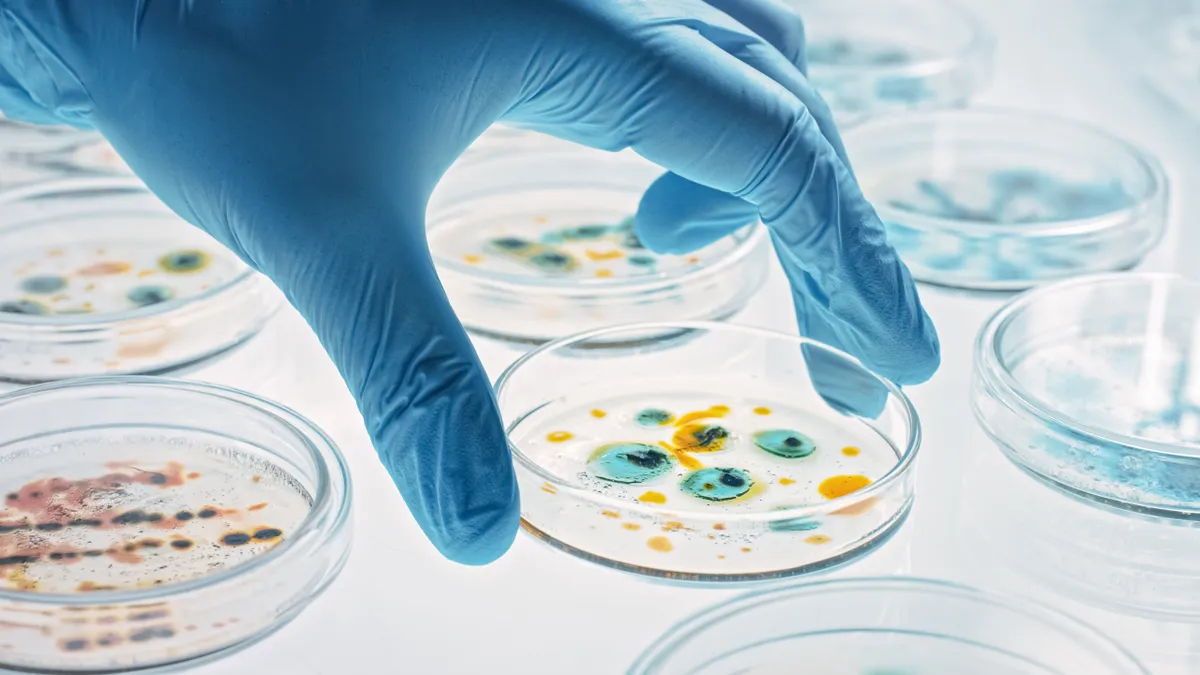Next to serious health threats like cancer or dementia, skin and urinary tract infections might seem run-of-the-mill. But antibiotic-resistant infections are a rising threat, killing about 1.2 million people worldwide each year.
A recent industry report from the Biotechnology Innovation Organization (BIO) trade association is sounding the alarm: Unless policy changes encourage more antibacterial drug development, the number of global deaths caused by antibiotic-resistant bugs could grow to an estimated 10 million a year by 2050.
“The key message is that the drug pipeline is thin and it is inadequate to address current resistant threats, let alone the threats in the future that are coming down the pike,” says Emily Wheeler, director of infectious disease policy at BIO. “Absent urgent policy action to stabilize and sustain this antimicrobial ecosystem, we’ll continue to see the collapse within this sector and the inadequacy of the pipeline to treat resistant threats.”
“The time is now to act,” Wheeler says.
Sluggish drug development
Antibacterial drug development soared in the last century with the discovery of more than 90% of existing drugs, turning once deadly infections into curable conditions.
But in a twist of fate, the continued use of those vital drugs is causing many bacteria to evolve and evade treatment. This raises the risk that many simple infections now treated with a quick course of antibiotics could once again become life-threatening.
Drug development is losing the race against antibiotic resistance. The drug pipeline isn’t sufficient to meet the increasing threat, says David Thomas, vice president of industry research for BIO and one of the report’s authors.
“When you break it down into the individual indications where there is antibiotic resistance, there is not enough going on,” Thomas says.
Antibiotics are more than twice as likely as other drugs to successfully reach the market from early clinical trials — 16.3% of antibacterial drugs make the cut compared with the industry average of 7.9% from 2011 to 2020. But there simply aren’t enough antibiotics in development to meet the need.
“For each indication, there would need to be way more [drug candidates] than what is currently in the pipeline,” Thomas says.
Waning investment
Among several factors driving the slowdown in antibacterial drug development is low investment in the space compared with other parts of life-science research. Venture capital funding for medical research has flooded priority areas such as cancer research, which in 2020 raised nearly $7 billion. Antibacterial drugs, on the other hand, brought in only $160 million the same year, according to the BIO report.
While new cancer treatments are certainly a critical need, neglecting antimicrobial treatments is a mistake, Wheeler says.
“We are hearing that patients are overcoming their cancers after chemotherapy, but then they are dying from a resistant infection that occurs afterwards,” she says. “That’s the situation because we do not have the products to treat these resistant infections that are threatening patients.”
There is also a financial disincentive for companies to invest in antibacterial drug development. It can cost upward of $2 billion to develop a new antibacterial drug through to approval and pharmaceutical giants like AstraZeneca, Sanofi and Novartis have exited the market.
Instead, much of the antibiotic development today is being undertaken by small pharmaceutical companies that have pockets deep enough to take the gamble.
“They're able to get that venture capital funding — the venture capital community is willing to take on high levels of risk that often pharma might not take,” Thomas says.
The real difficulty often emerges after a drug is approved. To prevent antibiotic resistance, new drugs are prescribed judiciously. While this is a smart therapeutic strategy, companies have a hard time making their money back on volume-based sales like they do with other drugs.
After approval, when many companies should be popping champagne corks, they’re often declaring bankruptcy, Thomas says. This was the case with the biotech startup Achaogen, which went bankrupt in 2019 — less than a year after the FDA approved Zemdri, its drug that targets treatment-resistant urinary tract infections.
Seeking a solution
To help drug companies recoup their investments in the antibiotic space, some proposed policy changes could make a difference and incentivize innovation, Wheeler says.
The proposed federal Pioneering Antimicrobial Subscriptions to End Up surging Resistance (PASTEUR) Act aims to provide a financial incentive to spur drug development. Instead of reimbursing manufacturers for individual antibiotic doses, the government would pay a subscription price for certain critical antimicrobial drugs.
“This would ensure the availability of the product is tied to the value of the product, not the amount of the volume of the product sold,” Wheeler says. “The PASTEUR Act is a bipartisan, bicameral policy that is gaining more co-sponsors every day.
Another reimbursement-related proposal, the Developing an Innovative Strategy for Antimicrobial Resistant Microorganisms (DISARM) Act, would help ensure that patients have access to these products once they reach the marketplace. If approved, Medicare would pay separately for drugs that meet a high, unmet medical need rather than as part of bundled payments, which are normally used to keep healthcare costs down.
The bundled payment plan means that hospitals might stand to lose money when prescribing certain new and often more expensive antibacterial products, ensuring that prescribing decisions are based on what is best for the patient, Wheeler says.
These proposals and other initiatives gained even more importance during the COVID-19 pandemic, which accelerated the need for new antibiotics as patients experienced secondary bacterial and fungal infections.
“Antimicrobials are not only a foundation of modern medicine, but they are key to pandemic preparedness and response as well,” Wheeler says. “We also know that the next pandemic could be bacterial or fungal in nature, and due to the pipeline, we are woefully unprepared.”








